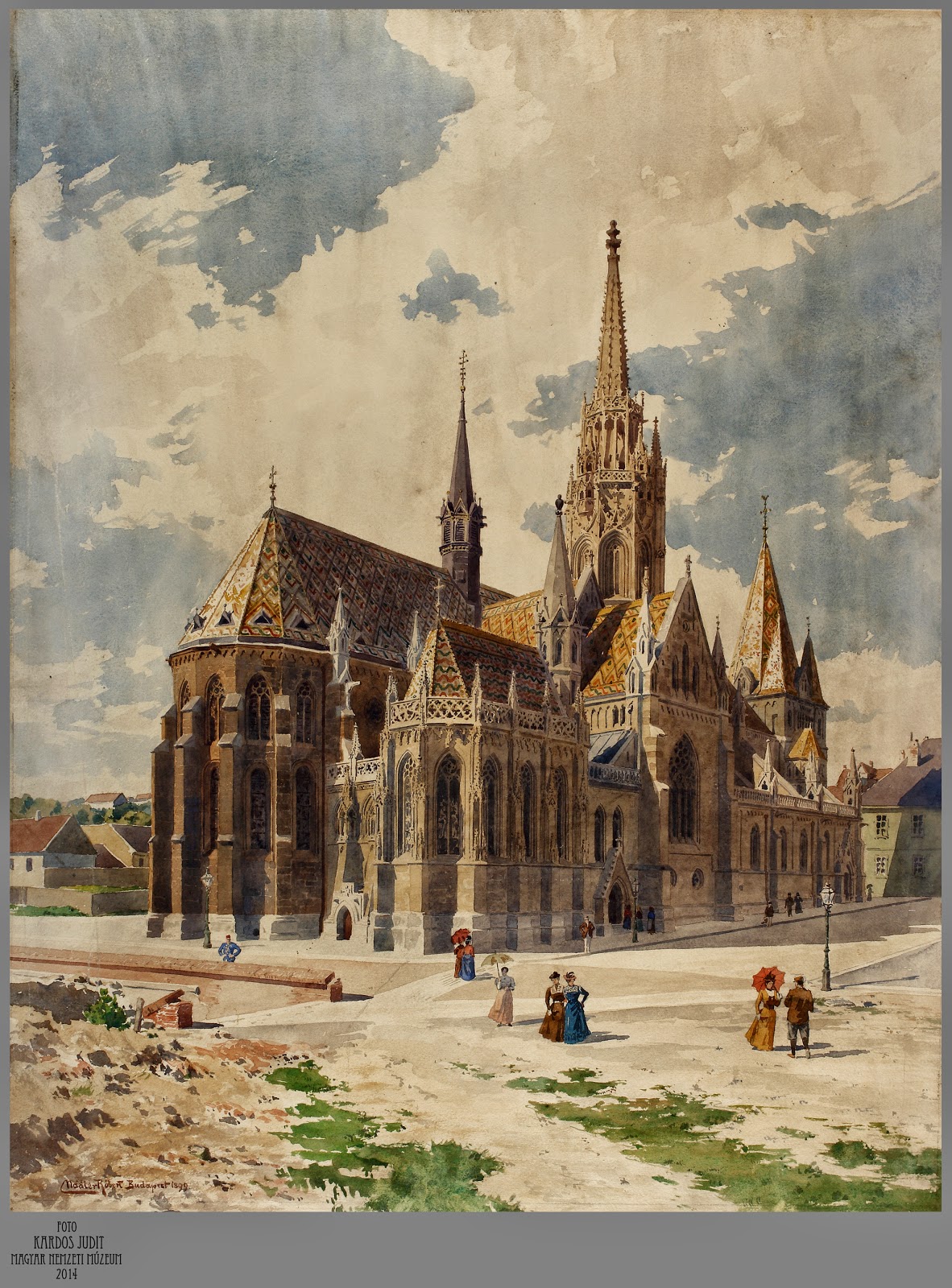 |
| Visegrád in 1595, print by Joris Hoefnagel |
Visegrád was one of the most important towns of medieval Hungary, serving as a royal residence for much of the 14th century. The town is ruled by a majestic castle on top of a hill overlooking the Danube, while a monumental 13th century keep guards the road under the hill, by the river. Even more famous is the large royal palace, expanded and embellished by King Matthias Corvinus. However, until recent
times, relatively little information has been available on Visegrád in English. One should mention the volume edited by László Gerevich, titled Towns in Medieval Hungary (1990), where Gerevich himself briefly considered Visegrád in the framework of a general study. The other book to be mentioned – titled Medium Regni – dealt with Hungarian royal centres in the middle of the Kingdom, and here Gergely Buzás provided an overview of Visegrád, focusing on the royal residences. the
history and topography of the settlement itself. In 1995, an English-language volume - titled Medieval Visegrád - was published about the royal palace and the Franciscan monastery standing next to it, and the royal palace was also featured in a number of exhibition catalogues and study collections. In addition, a book is available on the Hercules fountain attributed to Giovanni Dalmata.
 |
| Visegrád, aerial view of the Upper Castle |
Archaeolingua publishers in Budapest started a new series about medieval Visegrád, of which so far two volumes have been published. The books provide up to date information about this important royal centre. The first volume in the series was dedicated to the most important monument in town, the medieval royal palace and the neighbouring Franciscan monastery. While a lot has been published on the royal palace in Hungarian, this volume is the first extensive treatment of the subject in English. You can read a review of the book by Pál Lővei in Hungarian Archaeology (2014 Spring). The second volume is dedicated to the town itself, which has always been
overshadowed by the royal residences located there. Yet, for extended periods during the
14th century, Visegrád served as the capital city of the Kingdom
of Hungary, and thus is worthy of our attention. The neglect of
previous decades has been redressed by extensive archaeological
research during recent years and now by this very important
publication. The book relies on the results of new excavations and the research of one of the authors,
Orsolya Mészáros. She
is joined by a number of well-known experts of medieval archaeology and history: including the two other
editors of the volume, Gergely Buzás and József Laszlovszky. Both have dedicated a considerable number
of publications to Visegrád before, and Buzás has worked at the King Matthias Museum of Visegrád for a
long time, serving as its director since 2011. The fourth author is Katalin Szende, a noted historian working
on late medieval Hungarian towns.
From their analysis presented in this volume, the special character of Visegrád emerges. Although regarded
in the Late Middle Ages as one of the most important towns of the kingdom, the settlement in fact was not
significant when the court was away. It had no (or only regional) economic significance, no ecclesiastical
institutions of national significance, no serious fortifications (apart from the fortifications of the royal
residences). The presence of artisanal guilds cannot be demonstrated and only a very small number of the
town’s citizens are known to have studied at foreign universities. Even when the court was at Visegrád
during several decades in the 14th century, Visegrád was not regarded as the capital of Hungary – that role
was reserved for Buda. The main reason of its emergence during the 14th century was that high-ranking
nobles and court officials owned houses there, which also served as their offices. No wonder then, that when
the court left in the early 15th century, Buda (and Pest on the opposite side of the Danube) far surpassed
Visegrád in importance. Although Visegrád retained its privileges until the end of the Middle Ages, during
the 15th century it was only a small settlement next to an important royal residence, the royal palace.
 |
| Virtual reconstruction of the Royal Palace in the late 15th century, via |
 |
| Visegrád, Upper and Lower castle, with the town below |
These books provide a welcome addition to the growing library of books on medieval Hungary available
in English. It is to be hoped that the series will continue: the Árpád Period settlement of Visegrád – with the
bailiff’s castle, the archdeaconal church as well as the 11th century monastery of St. Andrew – and the Upper
and Lower Castle certainly provide ample
material for future volumes in the series, and I hope we can see these soon.
I wrote a more extensive review of the second volume, dedicated to the town, which can be read in English or in Hungarian in the Spring 2015 issue of Hungarian Archaeology.
Series title:
Medieval Visegrád. Archaeology, Art History and History of a Medieval Royal Centre
The Medieval Royal Palace at Visegrád. Edited by Gergely Buzás and József Laszlovszky. Budapest, Archaeolingua, 2013.
The Medieval Royal Town at Visegrád – Royal
Centre, Urban Settlement, Churches. Edited by Gergely Buzás, József Laszlovszky and Orsolya Mészáros.
Budapest, Archaeolingua, 2014.










.jpg)



